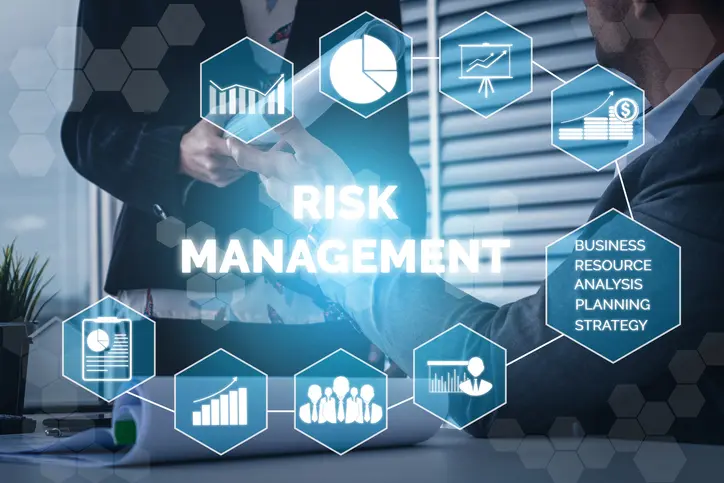Logistics Risks and Risk Mitigation Strategies in Vietnam
Vietnam’s logistics sector has become a vital pillar in Southeast Asia’s supply chain ecosystem, especially as companies diversify operations away from China. With an expected market size of over US$60 billion by 2025, the country offers ample growth opportunities for manufacturers, exporters, and global brands. However, Vietnam’s logistics sector is not without risks. From infrastructure constraints to regulatory hurdles, foreign businesses and logistics managers must understand potential pitfalls and implement mitigation strategies early on.
In this blog, we explore the major logistics risks in Vietnam and provide practical solutions to overcome them.
1. Infrastructure Limitations
Despite significant investment in logistics and infrastructure, Vietnam still grapples with bottlenecks in port connectivity, road networks, and urban congestion.
Common Issues:
-
Inadequate rail and inland waterway integration
-
Overburdened ports like Cat Lai (Ho Chi Minh City) and Hai Phong (North Vietnam)
-
Poor road conditions in rural provinces and industrial zones
Mitigation Strategies:
-
Multi-modal transport planning: Use a combination of road, sea, and rail to optimize costs and avoid chokepoints.
-
Work with third-party logistics (3PL) agents such as Vietnam-Agent.com to gain access to alternative routes and smart scheduling.
-
Choose warehousing hubs located closer to ports like Cai Mep–Thi Vai, which are undergoing rapid upgrades.
📌 Related: Top Ports in Vietnam: Which Port is Best for Your Import-Export Business?
2. Regulatory Complexity
Vietnam’s logistics regulations are evolving but still lack standardization and can be confusing for foreign businesses.
Risks:
-
Delays at customs checkpoints
-
Changing import-export duties or licenses
-
Unclear documentation requirements between ministries
Mitigation Strategies:
-
Employ a local customs brokerage or agent well-versed in Vietnamese regulations.
-
Regularly monitor updates from the Vietnam Ministry of Industry and Trade (MOIT) and General Department of Vietnam Customs.
-
Use digital documentation tools and work with agents like Vietnam-Agent.com to streamline customs clearance and minimize compliance errors.
3. Labor Shortages and Turnover
Vietnam faces periodic labor shortages, especially in peak export seasons, impacting warehouse operations and delivery services.
Risks:
-
Short-staffed fulfillment centers
-
High turnover of drivers and warehouse personnel
-
Poor last-mile delivery performance in Tier 2/3 cities
Mitigation Strategies:
-
Invest in automation and smart warehousing solutions to reduce labor dependency.
-
Partner with 3PLs that offer scalable staffing and regional presence.
-
Implement incentive-based contracts with your agent to reduce workforce turnover and boost reliability.
📌 Related: Smart Warehousing and Cold Chain Logistics in Vietnam: Trends and Opportunities
4. Natural Disasters and Climate Risks
Vietnam is highly vulnerable to typhoons, flooding, and seasonal monsoons, which can disrupt transportation and damage goods.
Risks:
-
Disruption of road and port infrastructure
-
Spoilage of perishable goods
-
Delays in rural-to-port supply chain routes
Mitigation Strategies:
-
Choose climate-resilient warehousing locations with robust drainage and backup systems.
-
Work with logistics partners that provide real-time tracking and weather-responsive planning.
-
Incorporate marine insurance, inland transit insurance, and supply chain risk models in your logistics planning.
Learn more about climate-related risks from Vietnam’s Ministry of Natural Resources and Environment (MONRE)
5. Cybersecurity and Digital Risk
As more logistics services in Vietnam shift to digital platforms, businesses face rising threats of data breaches, hacking, and system downtime.
Risks:
-
Breaches in shipment tracking systems
-
Downtime in warehouse management software
-
Cyberattacks targeting freight management platforms
Mitigation Strategies:
-
Choose agents that use secured, encrypted systems and comply with international data standards (e.g., ISO 27001).
-
Train staff in cyber hygiene and secure device usage.
-
Implement multi-factor authentication (MFA), regular backups, and disaster recovery plans.
📌 Related: How Vietnam Agents Can Streamline Your Supply Chain Operations
6. Reverse Logistics and Returns Management
With the rise of e-commerce and B2B returns, managing reverse logistics in Vietnam is still an emerging challenge.
Risks:
-
Lack of infrastructure for returns processing
-
Inconsistent handling of defective or unsold goods
-
High cost of product recalls or redistribution
Mitigation Strategies:
-
Use specialized agents that offer reverse logistics services including repackaging, repairs, and restocking.
-
Implement clear return policies and quality control checkpoints before distribution.
-
Incorporate vendor scorecards to measure and improve performance.
Final Thoughts: Risk Awareness Is Business Readiness
Vietnam is a vibrant and promising logistics market, but no logistics operation is risk-free. Understanding infrastructure gaps, regulatory nuances, and seasonal disruptions can save businesses from costly errors.
By partnering with the right Vietnam-based agent, foreign companies can build resilient supply chains, reduce operational friction, and scale with confidence.
